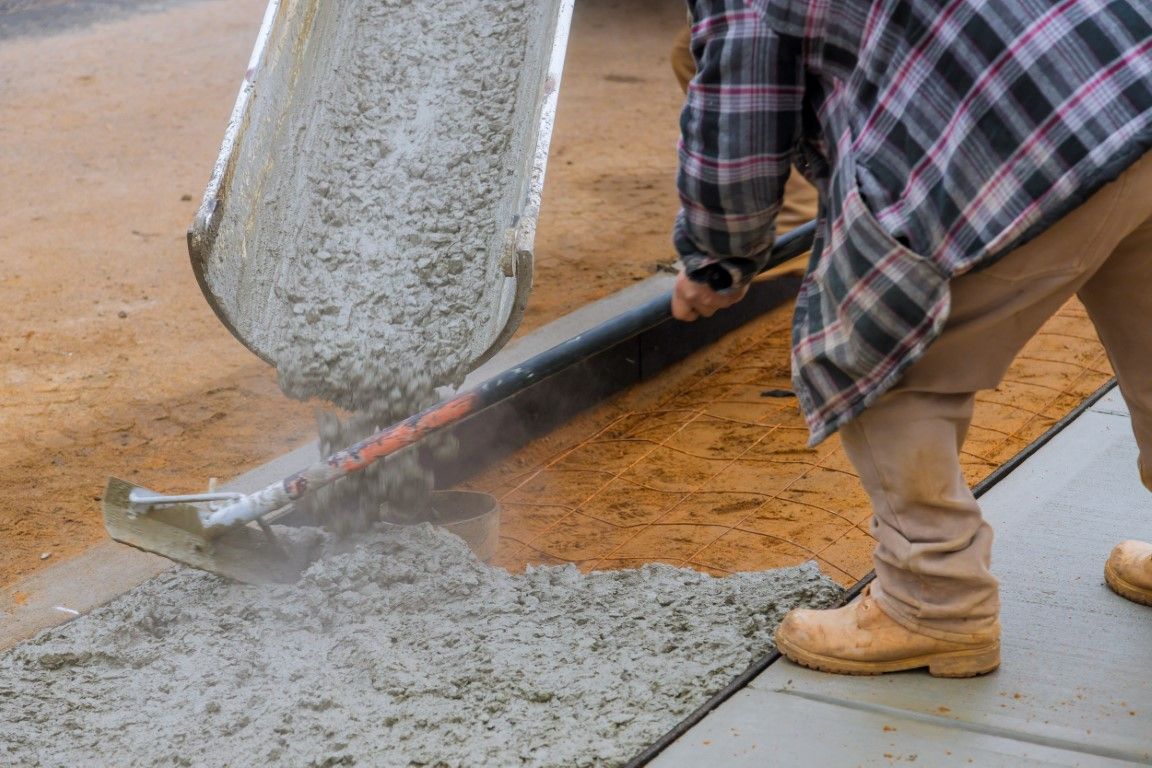Spreading Concrete
Our Blog about All Things Concrete

Your garage is more than just a space for parking cars; it's an extension of your home that can serve various purposes—from a workshop to a gym or even a stylish entertainment area. Transforming your garage into a functional and aesthetically pleasing space starts with choosing the right flooring. At Dunwoody Concrete, we specialize in innovative concrete flooring solutions that can elevate your garage and make it a standout feature of your home. In this blog, we'll explore some of the most effective and stylish concrete flooring options to help you reimagine your garage space. 1. Epoxy Coatings: Durable and Stylish Epoxy coatings are a popular choice for garage floors due to their durability and aesthetic appeal. An epoxy coating is a two-part system that consists of resin and hardener. When mixed and applied to a concrete surface, it forms a strong, seamless, and highly resistant layer that can withstand heavy use and exposure to chemicals. Benefits Durability: Epoxy coatings create a tough, impact-resistant surface that can handle the weight of vehicles, tools, and heavy equipment without damage. Easy Maintenance: The smooth, non-porous surface of epoxy is easy to clean and resistant to stains, spills, and abrasions. Aesthetic Options: Epoxy coatings are available in a variety of colors and finishes, including glossy, matte, and even metallic effects. You can also add decorative flakes or quartz aggregates for a unique look. 2. Polyurea and Polyaspartic Coatings: The Ultimate Protection Polyurea and polyaspartic coatings are advanced options that offer superior performance compared to traditional epoxy. These coatings cure quickly and provide excellent resistance to moisture, chemicals, and UV light, making them ideal for garages that experience extreme conditions. Benefits Fast Curing: Polyurea and polyaspartic coatings cure rapidly, allowing you to use your garage within 24 hours of application. High Durability: These coatings offer exceptional resistance to scratches, stains, and impacts, ensuring a long-lasting and attractive finish. UV Stability: Unlike some epoxy coatings that may yellow over time, polyurea and polyaspartic coatings retain their color and clarity. 3. Concrete Staining: Add Depth and Character Concrete staining is a versatile method that adds color and depth to your garage floor. Stains penetrate the concrete surface and react chemically with the concrete, creating rich, translucent colors that mimic the look of natural stone or marble. Benefits Customizable Colors: Concrete stains are available in a wide range of hues, from subtle earth tones to vibrant shades, allowing you to achieve the exact look you want. Enhanced Aesthetics: Staining can enhance the natural patterns and textures of the concrete, creating a sophisticated and visually interesting surface. Low Maintenance: Stained concrete is easy to maintain and can be sealed to improve its resistance to stains and wear. 4. Concrete Overlays: Renew and Resurface If your existing garage floor is worn or damaged, concrete overlays are an excellent solution for giving it a fresh look without the need for a complete replacement. Overlays involve applying a thin layer of new concrete over the existing surface, which can be customized with various finishes and textures. Benefits Cost-Effective: Concrete overlays are a more affordable option compared to removing and replacing the entire floor. Versatility: Overlays can be stamped, stained, or polished to achieve a variety of looks, from classic to contemporary. Surface Repair: Overlays can cover minor cracks, imperfections, and stains, creating a smooth and even surface. 5. Polished Concrete: Sleek and Modern Polished concrete is a stylish choice for a modern garage floor. The polishing process involves grinding the concrete surface with progressively finer abrasives to achieve a high-gloss finish. This method not only enhances the appearance but also improves the durability and ease of maintenance. Benefits Modern Look: The glossy, reflective surface of polished concrete adds a sleek and contemporary touch to your garage. Durability: Polished concrete is highly resistant to stains, scratches, and wear, making it ideal for high-traffic areas. Easy Maintenance: The smooth surface is easy to clean and maintain, requiring only occasional sweeping and mopping. Conclusion Transforming your garage with innovative concrete flooring solutions can significantly enhance its functionality and aesthetic appeal. Whether you opt for the durability of epoxy coatings, the advanced protection of polyurea and polyaspartic coatings, the rich hues of concrete staining, the versatility of concrete overlays, or the modern elegance of polished concrete, Dunwoody Concrete has the expertise to help you achieve your vision. Our team is dedicated to delivering high-quality results and ensuring your garage becomes a standout feature of your home. Explore the possibilities with our innovative concrete flooring solutions and enjoy a transformed garage that meets all your needs and style preferences.

Concrete is a ubiquitous material in construction, known for its strength and versatility. However, not all concrete is created equal. The durability of concrete, which determines how well it withstands the test of time and environmental factors, is influenced by a complex interplay of materials, processes, and conditions. At Dunwoody Concrete, we prioritize using advanced techniques and high-quality materials to ensure the longevity of our concrete structures. In this blog, we'll explore the science behind durable concrete and what you need to know to ensure your concrete projects stand the test of time. 1. The Role of Ingredients in Concrete Durability Concrete is composed of four primary ingredients: cement, water, aggregates, and admixtures. The quality and proportions of these ingredients play a critical role in the durability of the final product. Cement Cement acts as the binder in concrete, holding the other components together. The type and quality of cement used can significantly impact the concrete's strength and durability. Portland cement is the most common type used in construction, but there are various types with different properties tailored for specific applications. For instance, sulfate-resistant cement is used in environments exposed to high sulfate levels to prevent chemical degradation. Water The water-cement ratio is a crucial factor in concrete durability. Too much water can weaken the concrete by increasing its porosity, making it more susceptible to freeze-thaw cycles, chemical attacks, and abrasion. On the other hand, too little water can lead to poor workability and incomplete hydration of the cement. Achieving the right balance is key to producing strong and durable concrete. Aggregates Aggregates, such as sand, gravel, and crushed stone, make up the bulk of concrete's volume and contribute to its structural integrity. The size, shape, and cleanliness of aggregates can affect the concrete's workability, strength, and durability. Using well-graded aggregates and ensuring they are free of contaminants, like clay or organic matter, can enhance the concrete's performance. Admixtures Admixtures are chemical additives used to modify the properties of concrete. They can improve workability, accelerate or retard setting time, reduce water content, and enhance durability. For example, air-entraining admixtures create microscopic air bubbles within the concrete, providing resistance to freeze-thaw cycles. Similarly, water-reducing admixtures can reduce the water content needed, resulting in a denser and more durable concrete. 2. The Importance of Proper Mixing and Curing The process of mixing and curing concrete is as crucial as the ingredients used. Proper mixing ensures that all components are uniformly distributed, resulting in a consistent and strong material. Over-mixing or under-mixing can lead to segregation of materials and uneven strength distribution. Curing Curing is the process of maintaining the moisture and temperature conditions of the concrete after it has been placed, ensuring proper hydration of the cement. Proper curing significantly enhances the strength and durability of concrete. Without adequate curing, concrete can develop surface cracks, reduced strength, and increased permeability, making it more vulnerable to environmental damage. Curing can be achieved through various methods, including water curing (keeping the surface moist), using curing compounds (which form a protective layer to retain moisture), and covering with wet burlap or plastic sheets. The duration of curing depends on the type of cement, mix design, and environmental conditions, but it typically lasts from a few days to a few weeks. 3. Environmental Factors and Durability Concrete is often exposed to harsh environmental conditions, which can impact its durability. Understanding these factors and how to mitigate their effects is essential for ensuring the longevity of concrete structures. Freeze-Thaw Cycles In colder climates, the expansion and contraction caused by freeze-thaw cycles can lead to cracking and surface deterioration. Using air-entrained concrete and proper curing methods can help mitigate these effects. Chemical Exposure Concrete exposed to chemicals, such as deicing salts, sulfates, or acids, can suffer from chemical attacks, leading to deterioration. Using the right type of cement, admixtures, and protective coatings can enhance the concrete's resistance to these chemicals. Corrosion of Reinforcement In reinforced concrete structures, the corrosion of steel reinforcement can compromise the integrity of the structure. This is often caused by chloride ions from salts or carbonation. Using corrosion-resistant steel, adding corrosion inhibitors, and maintaining a low permeability in the concrete can help prevent corrosion. Conclusion The durability of concrete is a complex but critical aspect of construction that requires careful consideration of materials, processes, and environmental factors. At Dunwoody Concrete, we are committed to delivering high-quality concrete solutions that are not only aesthetically pleasing but also built to last. By understanding the science behind durable concrete and employing best practices in material selection, mixing, curing, and environmental protection, we ensure that our concrete structures stand the test of time. Whether you're planning a residential project or a commercial development, trust Dunwoody Concrete to provide durable and reliable concrete solutions that meet your needs.
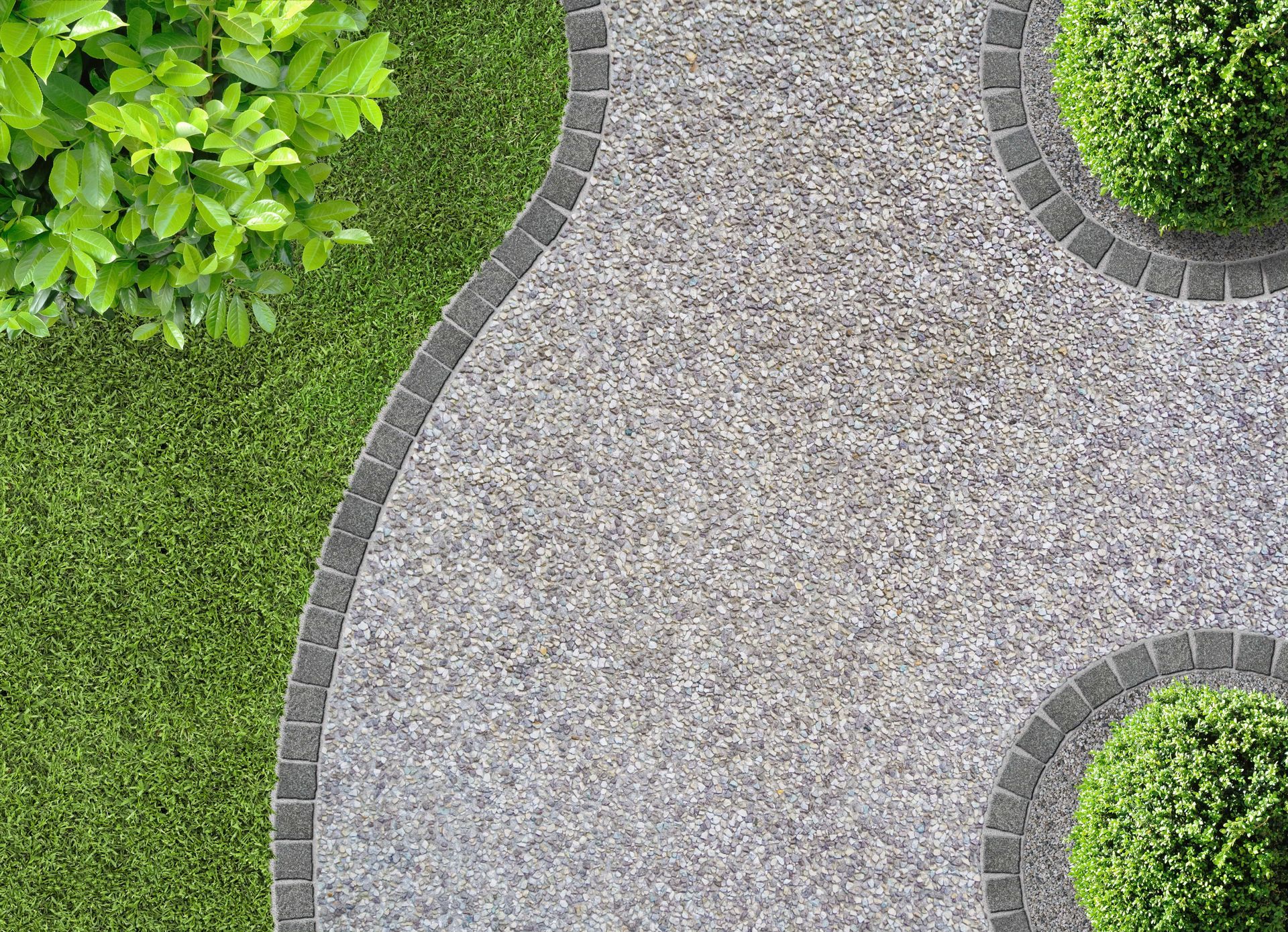
As outdoor living spaces continue to gain popularity, homeowners and businesses alike are seeking innovative ways to enhance their exteriors. One material that has stood out for its versatility, durability, and aesthetic appeal is decorative concrete. At Dunwoody Concrete, we specialize in creating stunning outdoor environments using the latest trends in decorative concrete. In this blog, we'll explore some of the top trends in decorative concrete that can elevate your outdoor spaces and make them truly stand out. 1. Stamped Concrete: Mimicking Natural Materials Stamped concrete remains one of the most popular trends in decorative concrete. This technique involves pressing patterns and textures into wet concrete to mimic the appearance of natural materials like stone, brick, slate, or even wood. The result is a high-end look that is both durable and cost-effective. Stamped concrete is perfect for patios, driveways, walkways, and pool decks, offering the beauty of more expensive materials without the high maintenance. With a wide variety of patterns and color options available, you can customize your outdoor space to match your personal style and the surrounding landscape. 2. Stained Concrete: Adding Vibrant Colors Stained concrete is another trend that continues to gain traction. This technique involves applying acid-based or water-based stains to the concrete surface, creating rich, translucent colors that can mimic the look of marble, natural stone, or even leather. The stains penetrate the concrete, creating a permanent color that won't fade, peel, or chip. Stained concrete is ideal for outdoor spaces like patios, pool decks, and garden pathways. It allows for a wide range of color possibilities, from earthy tones that blend with the natural environment to bold, vibrant colors that make a statement. Additionally, stained concrete can be combined with other decorative techniques, such as scoring or engraving, to create intricate designs and patterns. 3. Exposed Aggregate: A Textured, Natural Look Exposed aggregate concrete is a decorative technique that involves removing the top layer of cement paste to reveal the underlying aggregate, such as pebbles, stones, or shells. This creates a textured surface with a natural, rustic appearance that is both slip-resistant and visually appealing. Exposed aggregate is commonly used for driveways, walkways, and patios, providing a durable and low-maintenance option that can withstand heavy foot traffic and harsh weather conditions. The exposed aggregate can be customized with different types and colors of stones to achieve a unique and personalized look. 4. Polished Concrete: Sleek and Modern Polished concrete is known for its smooth, glossy finish, making it a popular choice for modern outdoor spaces. This technique involves grinding and polishing the concrete surface to achieve a high sheen, which not only enhances the appearance but also makes the surface easier to clean and maintain. Polished concrete can be further enhanced with the addition of dyes or stains, creating a wide range of color options. It is a versatile choice for patios, outdoor kitchens, and entertainment areas, offering a contemporary and sophisticated look that complements modern architecture. 5. Concrete Overlays: Transforming Existing Surfaces Concrete overlays are a fantastic option for revitalizing existing outdoor surfaces. This technique involves applying a thin layer of new concrete over an existing surface, which can then be stamped, stained, or polished to achieve the desired look. Concrete overlays are a cost-effective way to update worn or damaged surfaces without the need for complete replacement. Overlays are ideal for driveways, patios, pool decks, and other outdoor areas. They can be used to cover imperfections, add decorative elements, and create a fresh, new look that enhances the overall aesthetic of your outdoor space. 6. Engraving and Scoring: Adding Intricate Details Engraving and scoring are decorative techniques that involve cutting patterns or designs into the concrete surface. These techniques can be used to create intricate details, such as borders, medallions, or geometric patterns, adding a unique and personalized touch to your outdoor spaces. Engraving and scoring are versatile options that can be used in conjunction with other decorative techniques, such as staining or stamping, to create a cohesive and visually stunning design. They are perfect for adding a touch of elegance and sophistication to patios, walkways, and entryways. Conclusion Decorative concrete offers endless possibilities for enhancing your outdoor spaces. From the rustic charm of exposed aggregate to the sleek sophistication of polished concrete, the latest trends in decorative concrete can transform any outdoor area into a beautiful and functional space. At Dunwoody Concrete, we are dedicated to helping you achieve your vision with our expertise in decorative concrete techniques. Whether you're looking to update your patio, create a stunning driveway, or add unique details to your outdoor space, our team is here to bring your ideas to life. Elevate your outdoor spaces with the beauty and durability of decorative concrete and enjoy a stunning, customized environment that you'll love for years to come.

In the ever-evolving world of architecture and design, concrete has emerged as a top choice for modern homes and businesses. Gone are the days when concrete was seen merely as a structural material. Today, it is celebrated for its versatility, durability, and aesthetic appeal. At Dunwoody Concrete, we specialize in delivering high-quality concrete solutions that meet the needs of contemporary spaces. In this blog, we'll explore why concrete is the ultimate choice for modern homes and businesses. Versatility in Design One of the standout features of concrete is its incredible versatility. It can be molded, shaped, and finished in a myriad of ways, making it suitable for various architectural styles and applications. Whether you're looking for sleek, minimalist surfaces or intricate decorative details, concrete can be customized to achieve the desired look. Aesthetic Appeal Concrete can be transformed into stunning works of art through techniques such as stamping, staining, and polishing. Stamped concrete can mimic the appearance of more expensive materials like stone, brick, or wood, while stained concrete offers a wide range of color options to complement any design scheme. Polished concrete, with its smooth, glossy finish, is perfect for modern interiors and exteriors, adding a touch of sophistication and elegance. Functional Design Beyond aesthetics, concrete is also a highly functional material. It can be used for a variety of applications, from floors and walls to countertops and outdoor features. Its adaptability makes it an excellent choice for both residential and commercial projects, providing a seamless transition between different areas of a space. Durability and Longevity Concrete is renowned for its durability and longevity, making it a practical choice for modern homes and businesses. It can withstand heavy traffic, extreme weather conditions, and daily wear and tear, ensuring that your investment lasts for many years. When properly installed and maintained, concrete surfaces can remain in excellent condition for decades. Low Maintenance One of the key benefits of concrete is its low maintenance requirements. Unlike other materials that may need regular refinishing or replacement, concrete surfaces are easy to care for. Routine cleaning and occasional sealing are typically all that's needed to keep concrete looking its best. This makes it an attractive option for busy homeowners and business owners who want a beautiful, functional space without the hassle of constant upkeep. Sustainability and Environmental Benefits As the demand for sustainable building materials grows, concrete stands out as an eco-friendly option. It is made from abundant natural resources, such as limestone, sand, and water, and can be recycled at the end of its lifecycle. Additionally, concrete's thermal mass properties help regulate indoor temperatures, reducing the need for heating and cooling systems and contributing to energy efficiency. Reflective Properties Concrete's light color and reflective properties also make it a sustainable choice for exterior surfaces. Light-colored concrete reflects more sunlight and absorbs less heat, reducing the urban heat island effect in cities. This can lead to lower energy consumption and a cooler, more comfortable environment. Cost-Effectiveness Concrete is a cost-effective building material, offering excellent value for the price. Its long lifespan and low maintenance costs make it a wise investment for homeowners and businesses alike. Additionally, the versatility of concrete allows for a wide range of design possibilities, enabling you to achieve a high-end look without breaking the bank. Innovation and Modern Applications The use of concrete in modern homes and businesses extends beyond traditional applications. Innovations in concrete technology have led to the development of new products and techniques, such as lightweight concrete, translucent concrete, and self-healing concrete. These advancements open up new possibilities for creative design and functional solutions. Smart Concrete Smart concrete, embedded with sensors and microprocessors, can monitor structural integrity and provide real-time data on the condition of a building. This innovation is particularly valuable for commercial and industrial applications, where safety and durability are paramount. Conclusion Concrete is the ultimate choice for modern homes and businesses due to its versatility, durability, and sustainability. At Dunwoody Concrete, we are committed to delivering innovative and high-quality concrete solutions that enhance the beauty and functionality of your space. Whether you're looking to create a sleek, modern aesthetic or a unique, custom design, concrete offers endless possibilities. Explore the potential of concrete and discover why it is the preferred material for contemporary architecture and design.

Concrete is no longer just a utilitarian material for building foundations and sidewalks; it has evolved into a versatile and aesthetically pleasing option for driveways and patios. With advancements in concrete technology and design techniques, homeowners can now enjoy stunning outdoor spaces that are not only durable but also visually appealing. At Dunwoody Concrete, we specialize in transforming ordinary concrete into extraordinary works of art, enhancing the beauty and functionality of your home. In this blog, we'll explore the art of crafting stunning driveways and patios with concrete and the benefits it offers. The Versatility of Concrete Concrete is a remarkably versatile material that can be customized in numerous ways to achieve a wide range of styles and finishes. Whether you prefer a sleek, modern look or a rustic, natural appearance, concrete can be tailored to suit your taste. Through techniques such as stamping, staining, and polishing, concrete can mimic the look of natural stone, brick, or even wood, allowing homeowners to achieve the desired aesthetic without the high cost of natural materials. Stamped Concrete Stamped concrete is a popular choice for creating stunning driveways and patios. This technique involves pressing patterns and textures into the wet concrete surface, giving it the appearance of more expensive materials like slate, cobblestone, or brick. The result is a beautiful, durable surface that adds character and charm to any outdoor space. Stamped concrete is also highly customizable, with a wide range of patterns and colors available to suit any design preference. Stained Concrete Stained concrete is another excellent option for adding visual interest to driveways and patios. This technique involves applying color stains to the concrete surface, which penetrates the material and creates a rich, translucent finish. Stained concrete can be used to achieve a variety of looks, from earthy tones that blend seamlessly with the natural landscape to bold, vibrant colors that make a statement. The stains are also UV-resistant, ensuring the color remains vibrant for years to come. Polished Concrete For a sleek and modern aesthetic, polished concrete is an ideal choice. This technique involves grinding and polishing the concrete surface to a smooth, high-gloss finish. The polished surface not only looks stunning but is also easy to maintain and highly resistant to stains and wear. Polished concrete can be further enhanced with decorative elements like embedded aggregates or colored dyes, creating a unique and sophisticated look for driveways and patios. The Benefits of Concrete Driveways and Patios Choosing concrete for your driveway or patio offers numerous benefits beyond its aesthetic appeal. Concrete is a highly durable material that can withstand heavy loads and harsh weather conditions, making it an ideal choice for outdoor spaces. With proper installation and maintenance, concrete surfaces can last for decades, providing excellent value for your investment. In addition to its durability, concrete is also a low-maintenance option. Unlike other materials, concrete does not require frequent sealing or resurfacing. Simple cleaning and occasional sealing are typically all that is needed to keep concrete surfaces looking their best. This makes concrete an attractive choice for homeowners who want a beautiful and functional outdoor space without the hassle of constant upkeep. Furthermore, concrete is an environmentally friendly option. It is made from abundant natural materials and can be recycled at the end of its lifespan. Concrete's reflective properties also help reduce the urban heat island effect, making it a more sustainable choice for driveways and patios. Conclusion The art of crafting stunning driveways and patios with concrete lies in the ability to combine aesthetics with functionality. At Dunwoody Concrete, we take pride in creating beautiful, durable, and low-maintenance outdoor spaces that enhance the value and appeal of your home. Whether you envision a classic, rustic, or contemporary design, our team of skilled professionals can bring your vision to life with our wide range of concrete solutions. Explore the possibilities of concrete and transform your outdoor space into a work of art that you can enjoy for years to come.
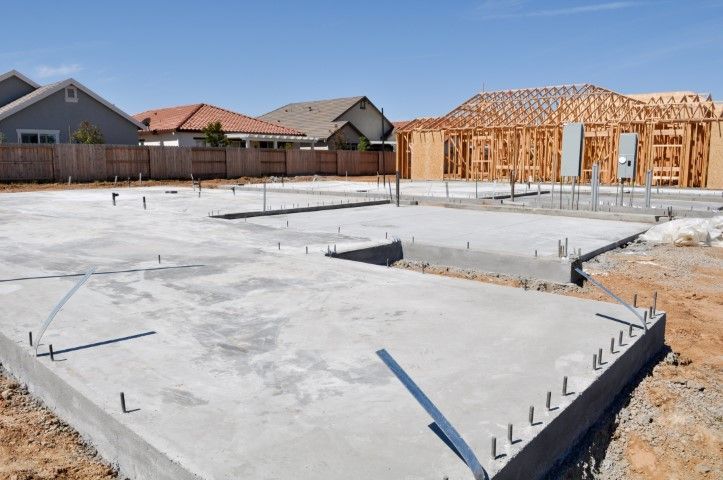
At Dunwoody Concrete Co, we know that a well-maintained concrete surface not only enhances the aesthetic appeal of your property but also ensures its longevity and durability. Whether it's a driveway, patio, or foundation, proper maintenance is essential for preserving the beauty and functionality of your concrete investment. In this blog post, we'll delve into the importance of concrete maintenance and share valuable tips and tricks to keep your surfaces looking pristine for years to come. Preventive Measures Preventive maintenance is the cornerstone of concrete care, helping to mitigate damage and prolong the lifespan of your surfaces. Regular inspections allow you to identify and address potential issues such as cracks, spalling, or surface discoloration before they escalate into larger problems. Inspect your concrete surfaces periodically for signs of wear and tear, especially after extreme weather events or heavy use. Cleaning and Stain Removal Routine cleaning is crucial for maintaining the appearance and integrity of your concrete surfaces. Remove debris, dirt, and organic matter using a broom, leaf blower, or pressure washer to prevent stains and discoloration. For stubborn stains such as oil spills or rust, use specialized concrete cleaners or poultices to lift the stains without damaging the surface. Avoid harsh chemicals or abrasive cleaning methods that can erode the concrete or compromise its protective sealant. Sealing and Protective Coatings Applying a quality sealant or protective coating is essential for safeguarding your concrete surfaces against moisture penetration, UV exposure, and chemical damage. Sealants create a barrier that prevents water infiltration, reduces the risk of cracks and spalling, and enhances the color and sheen of the concrete. Reapply sealant as needed, typically every 1-3 years depending on the product and environmental conditions, to maintain optimal protection. Repairing Cracks and Damage Addressing cracks and damage promptly is critical to prevent further deterioration and structural issues. Small cracks can be repaired using epoxy or polymer-based fillers, while larger cracks may require professional attention and structural reinforcement. Consult with a qualified concrete contractor to assess the extent of damage and recommend appropriate repair methods to restore the integrity of your surfaces. Drainage and Water Management Proper drainage is essential for preventing water accumulation and potential damage to your concrete surfaces. Ensure that your drainage systems, such as gutters, downspouts, and French drains, are functioning correctly and directing water away from your concrete structures. Grade the surrounding landscape to promote runoff and minimize pooling or standing water, which can weaken the concrete and lead to moisture-related issues. Winter Maintenance Winter weather poses unique challenges for concrete maintenance, as freezing temperatures and ice-melting chemicals can cause damage to unprotected surfaces. Prioritize snow removal to prevent ice buildup and reduce the risk of slips and falls. Use non-corrosive de-icing agents or sand instead of traditional rock salt, which can accelerate concrete deterioration. Consider applying a winter-specific sealant or protective coating to shield your surfaces from harsh winter conditions. Professional Maintenance Services While DIY maintenance efforts can be effective, consulting with a professional concrete contractor can provide added assurance and expertise. Professional maintenance services, such as annual inspections, sealant applications, and repair work, can help prolong the lifespan of your concrete surfaces and ensure they remain in optimal condition year-round. Invest in regular maintenance to protect your concrete investment and enjoy long-lasting beauty and performance. At Dunwoody Concrete Co, we believe that proper maintenance is the key to preserving the beauty, durability, and functionality of your concrete surfaces. By implementing preventive measures, routine cleaning, and proactive repair strategies, you can extend the lifespan of your concrete structures and enhance their aesthetic appeal. Follow these tips and tricks to keep your concrete surfaces looking their best for years to come. Contact us today for expert advice and professional maintenance services tailored to your specific needs.
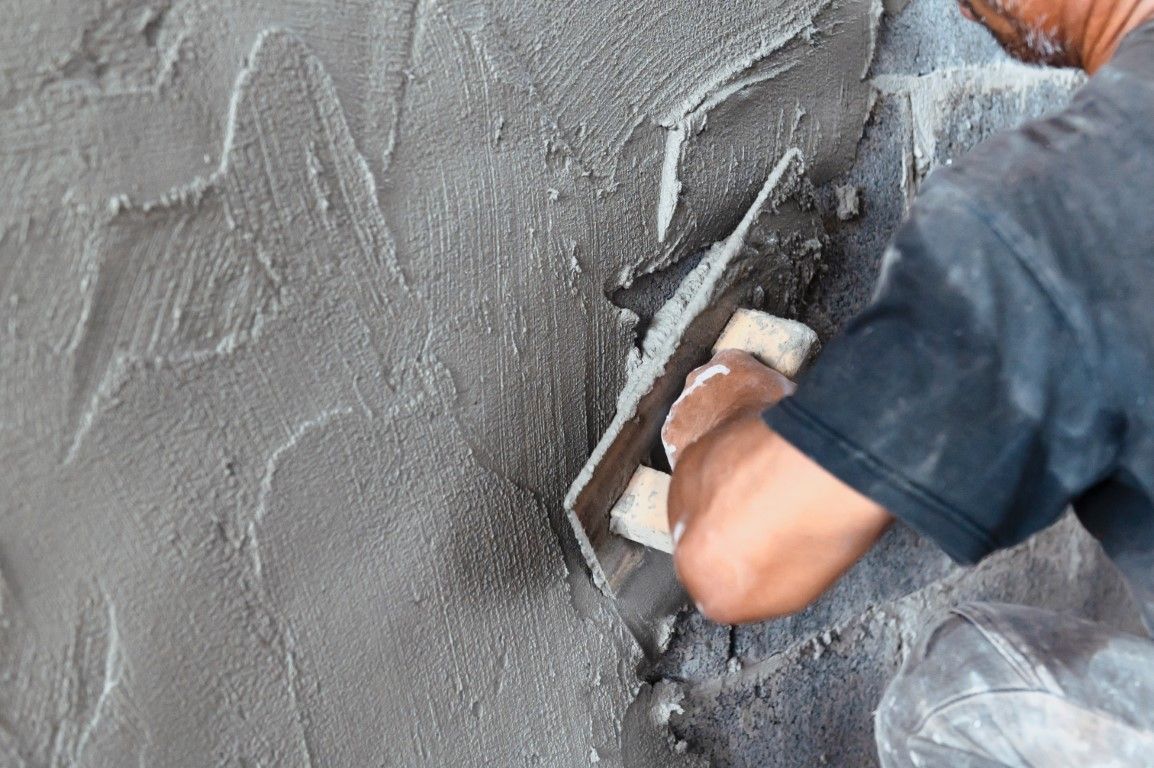
At Dunwoody Concrete Co, we understand that transparency and clarity are essential when it comes to discussing the cost of concrete construction projects. Whether you're planning a residential driveway, a commercial parking lot, or a decorative patio, understanding the factors that influence pricing is crucial for budgeting and decision-making. In this blog post, we'll break down the cost of concrete construction and explore the key factors that affect pricing. 1. Project Size and Scope The size and scope of your concrete project have a significant impact on the overall cost. Larger projects that require more materials, labor, and equipment will naturally incur higher expenses than smaller-scale endeavors. Factors such as the square footage, thickness, and complexity of the concrete structure will determine the amount of material and labor required, thus influencing the final cost. 2. Site Preparation and Accessibility Site preparation plays a crucial role in the cost of concrete construction. Projects that require extensive excavation, grading, or demolition work will incur additional expenses for labor and equipment. Accessibility to the construction site also affects pricing, as challenging terrain or limited access may require specialized equipment or additional manpower, resulting in higher costs. 3. Concrete Mix Design and Quality The type of concrete mix specified for your project and its quality significantly impact pricing. Concrete mixes vary in composition and performance characteristics, with different grades and additives tailored to specific applications. Higher-quality concrete mixes, such as those designed for increased strength, durability, or decorative finishes, may come at a premium price compared to standard mixes. 4. Reinforcement Requirements Reinforcement, such as rebar or wire mesh, is often used to enhance the strength and durability of concrete structures, particularly in areas prone to heavy loads or seismic activity. The amount and type of reinforcement required for your project will affect pricing, as materials and labor costs for installation vary accordingly. Additionally, complex reinforcement designs or custom fabrications may incur additional expenses. 5. Labor Costs and Skill Level Labor costs are a significant component of concrete construction pricing. Skilled laborers with experience in concrete placement, finishing, and curing play a crucial role in ensuring the quality and integrity of the final product. The skill level required for your project, as well as local labor market conditions, will influence labor costs. Additionally, factors such as project timelines, overtime requirements, and union regulations may impact pricing. 6. Project Location and Logistics The geographical location of your project can impact pricing due to variations in material availability, transportation costs, and local building codes. Projects located in remote or rural areas may incur higher transportation expenses for materials and equipment. Additionally, urban projects may face logistical challenges such as limited space for equipment staging or permitting requirements, which can affect pricing. 7. Permitting and Regulatory Compliance Obtaining the necessary permits and complying with local building codes and regulations are essential steps in any concrete construction project. Permitting fees, inspection costs, and compliance with environmental or zoning requirements can add to the overall project expenses. Working with a reputable contractor who is knowledgeable about local regulations can help streamline the permitting process and ensure compliance, thus avoiding potential delays and additional costs. At Dunwoody Concrete Co, we believe in providing our clients with transparent pricing and exceptional value for their concrete construction projects. By understanding the factors that influence pricing, you can make informed decisions and budget effectively for your project. Our team of experienced professionals is committed to delivering high-quality workmanship, outstanding service, and competitive pricing to meet your needs and exceed your expectations. Contact us today to discuss your concrete construction project and receive a customized quote tailored to your specific requirements.

Are you considering adding a concrete patio to your home? Look no further than Dunwoody Concrete Co. Our team of expert concrete contractors is dedicated to helping you achieve your vision and enhance the value of your property. But does adding a concrete patio truly increase home value? Let's explore the benefits and considerations associated with this popular home improvement project. Creating Space for Gatherings A concrete patio offers more than just visual appeal; it provides a versatile outdoor space for hosting gatherings and entertaining loved ones. Whether you envision cozy evenings with family or lively barbecues with friends, a well-designed patio extends your living space and enhances your lifestyle. Our skilled concrete contractors at Dunwoody Concrete Co. can bring your patio dreams to life, creating a seamless transition between indoor and outdoor living areas. Boosting Market Appeal Investing in a concrete patio can significantly enhance the marketability of your home, making it more attractive to potential buyers. In today's real estate market, outdoor living spaces are highly sought after, with many homebuyers prioritizing amenities that promote outdoor relaxation and entertainment. By adding a concrete patio, you're not only increasing the aesthetic appeal of your home but also its overall value. Dunwoody Concrete Co. offers professional patio construction services tailored to your home's architecture and your lifestyle preferences. Maximizing Return on Investment A concrete patio is more than just a cosmetic enhancement; it's a smart investment that yields high returns when it comes time to sell your home. Homes with well-designed outdoor spaces, including patios, command higher prices and sell faster than those without. By partnering with Dunwoody Concrete Co. for your patio construction needs, you're making a strategic investment in your property's future value and marketability. Why Choose Dunwoody Concrete Co.? At Dunwoody Concrete Co., we understand the importance of quality craftsmanship and personalized service. Our team of concrete experts is committed to delivering exceptional results that exceed your expectations. Whether you're looking to enhance your home's curb appeal, create a functional outdoor oasis, or maximize its market value, we have the skills and expertise to bring your vision to life. Contact Us Today Don't underestimate the impact of adding a concrete patio to your home. From enhancing aesthetics to increasing market appeal, a concrete patio offers numerous benefits that can transform your outdoor living experience. If you're searching for a reliable construction company to build your dream patio, look no further than Dunwoody Concrete Co. Call us today to schedule a consultation and discover how we can help you create a custom patio that complements your home's design and fits your budget.
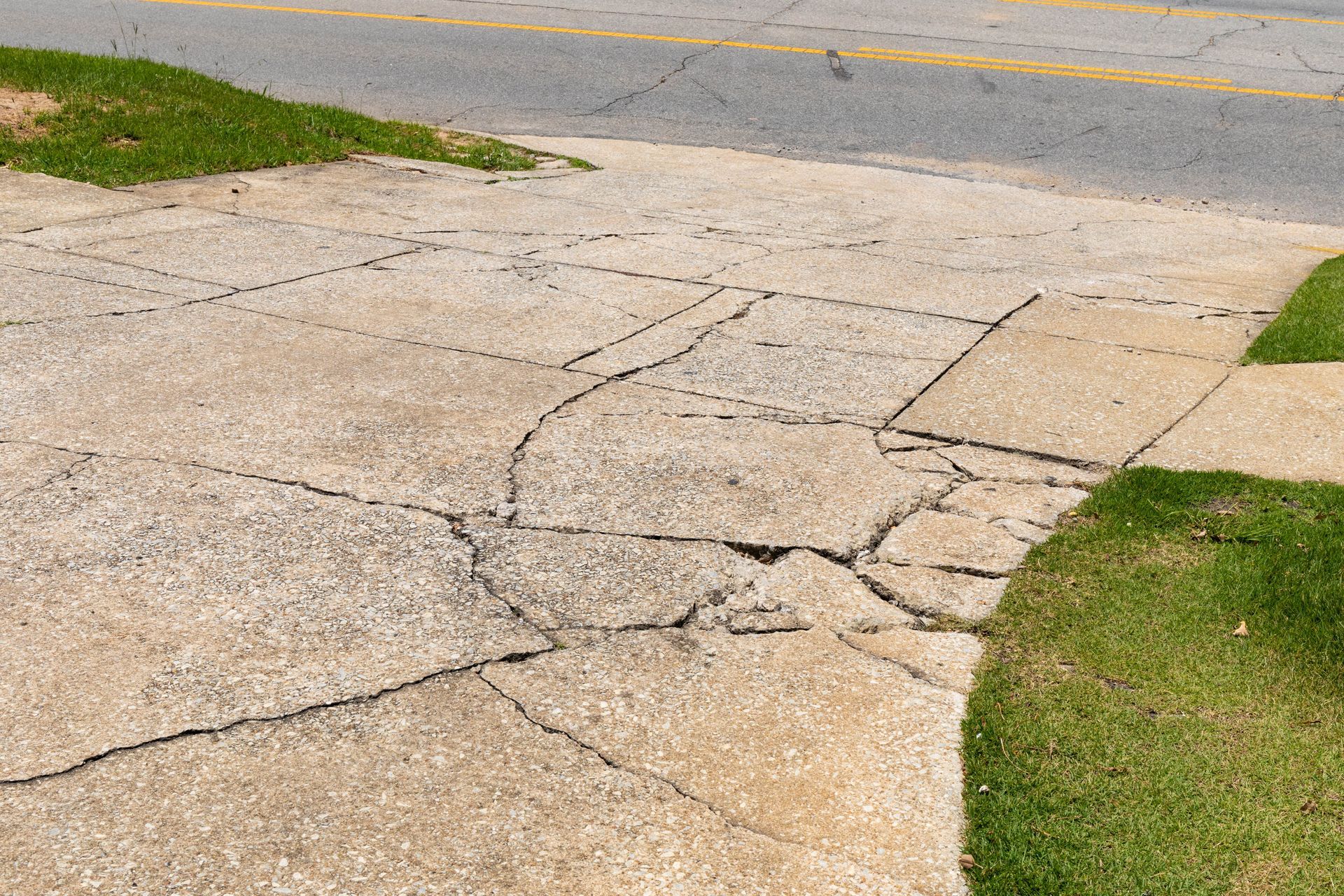
Concrete driveways serve as vital components of residential properties, offering both functionality and curb appeal. As homeowners, it's essential to understand the lifespan and maintenance requirements of concrete driveways to maximize their durability and aesthetic appeal. Dunwoody Concrete Co. provides valuable insights into the factors influencing the longevity of concrete driveways, along with expert recommendations for ensuring their continued performance and visual appeal. Understanding Longevity Concrete driveways are renowned for their durability, with properly installed and maintained surfaces lasting for decades. Modern concrete technology, combined with expert installation techniques, has significantly enhanced the lifespan of concrete driveways. When executed by experienced professionals like those at Dunwoody Concrete Co., concrete driveways can withstand the rigors of daily use and environmental exposure for up to 30 years or more. Ways to Maintain Routine maintenance is crucial for preserving the condition and appearance of concrete driveways. Key maintenance practices include: Sealing: Applying a high-quality concrete sealer every two to three years provides protection against moisture infiltration, UV exposure, and surface staining. Sealers enhance the driveway's resistance to cracking, spalling, and color fading, prolonging its lifespan and maintaining its aesthetic appeal. Cleaning: Regular cleaning with a mild detergent and water removes dirt, debris, and stains from the surface of the driveway. Avoid harsh chemicals or abrasive cleaners that can damage the concrete or compromise the integrity of the sealer. Periodic pressure washing can effectively remove stubborn stains and restore the driveway's appearance. Repairing Cracks: Addressing cracks promptly prevents water penetration and prevents further damage to the driveway. Small cracks can be filled with a concrete crack filler, while larger or more extensive damage may require professional repair services to restore the structural integrity of the driveway. Snow and Ice Removal: During winter months, proper snow and ice removal techniques are essential for preventing damage to concrete driveways. Try not to use metal shovels or sharp objects that can damage the surface and leave scratch marks. Use a plastic snow shovel or snow blower to remove snow, and apply a calcium chloride-based ice melt sparingly to minimize damage to the concrete. Signs it Might Be Time for Replacement Despite proper maintenance, there may come a time when replacement is necessary for an aging or deteriorating concrete driveway. Signs that indicate the need for replacement include: - Extensive cracking or spalling that compromises the structural integrity of the driveway. - Severe settlement or heaving caused by underlying soil issues or inadequate base preparation. - Widespread surface deterioration, including deep pitting, scaling, or surface erosion. - Persistent drainage problems that cannot be effectively addressed through repairs. Hit up Your Concrete Experts When replacement becomes inevitable, entrusting the project to experienced concrete contractors ensures superior results and lasting performance. Dunwoody Concrete Co. offers professional concrete driveway replacement services, utilizing advanced techniques and quality materials to deliver durable, visually appealing driveways that enhance the overall aesthetics and value of residential properties. In conclusion, concrete driveways represent a durable and aesthetically pleasing solution for homeowners seeking long-lasting performance and curb appeal. By understanding the factors influencing the longevity of concrete driveways and implementing proper maintenance practices, homeowners can enjoy years of reliable service and visual appeal from their driveways. For expert guidance and concrete driveway services in Dunwoody, GA, rely on Dunwoody Concrete Co. to deliver exceptional results and exceed your expectations.
